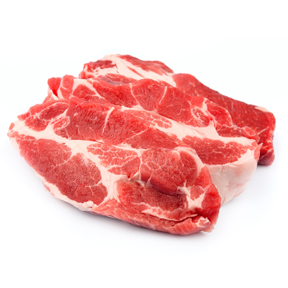Red Meat May Raise Breast Cancer Risk
Women who consume increased amounts of red meat have a higher risk of breast cancer compared with those who have a protein intake consisting largely of non–red meat such as poultry, fish, and legumes.
Women who get more of their protein from red meat have a higher risk of breast cancer.

Women who consume increased amounts of red meat have a higher risk of breast cancer compared with those who have a protein intake consisting largely of non–red meat such as poultry, fish, and legumes, according to a new study that looked at the protein diets of premenopausal women. While the majority of previous studies have looked at women’s diets late in life, the current study, by Maryam S. Farvid, PhD, associate professor in the department of nutrition at Harvard School of Public Health in Boston, and colleagues, examined the diet histories of women aged 24 to 43, who took part in the Nurses’ Health Study II. The analysis suggested that eating a diet containing a high proportion of red meat as a protein source earlier in life may influence breast cancer risk more so than consuming red meat after menopause. The study was published in BMJ.
Compared with women who consumed the least amount of red meat, those who consumed the most had a 22% relative increase in receiving a breast cancer diagnosis (P = .01). Each extra serving of red meat daily was linked to a 13% relative increase in breast cancer risk for all women, a 12% increase for premenopausal women, and an 8% increase for postmenopausal women. A higher overall intake of poultry, fish, eggs, legumes, and nuts was not related to breast cancer risk.
Swapping a single red meat serving for poultry or legumes resulted in a 17% and 15% lower relative risk, respectively, of breast cancer overall and a 24% and 19% lower relative risk of postmenopausal breast cancer.
“Consistent with the American Cancer Society guidelines, replacement of unprocessed and processed red meat with legumes and poultry during early adulthood may help to decrease the risk of breast cancer,” the authors concluded.
The researchers tracked the dietary and medical histories of 88,803 women. At 20-year follow-up, 2,830 cases of breast cancer had been diagnosed. Using patient medical histories, including age, weight, race, smoking history, hormone and contraceptive use, and dietary survey data that included a history of food consumption from high school, the researchers created a statistical model to correlate breast cancer risk with protein intake.
Red meat was defined as either unprocessed (beef, pork, lamb) or processed (hot dogs, bacon, sausage). The dietary survey included nine categories of consumption, from “never” and “less than once per month” to “six or more per day.”
Women who consumed more meat were also more likely to have a larger body mass index, to consume more calories, to smoke, to have three or more children, and to have a history of benign breast disease.
How protein consumption influences breast cancer risk is not clear. One hypothesis is that a higher protein intake overall may increase the insulin-like growth factor 1, which has roles in tumor growth, although it is likely that the specific protein type would influence the effect on insulin and breast cancer development. Neither prospective nor retrospective cohort studies have found a substantial link between red meat consumption and breast cancer risk, but these studies predominantly analyzed diet during later life-not the cumulative history of women’s diets.
Still, the current study has limitations, including relying on patient self-reporting of diet. Further research is needed to better understand the link between protein intake during both early and late adulthood and breast cancer risk.